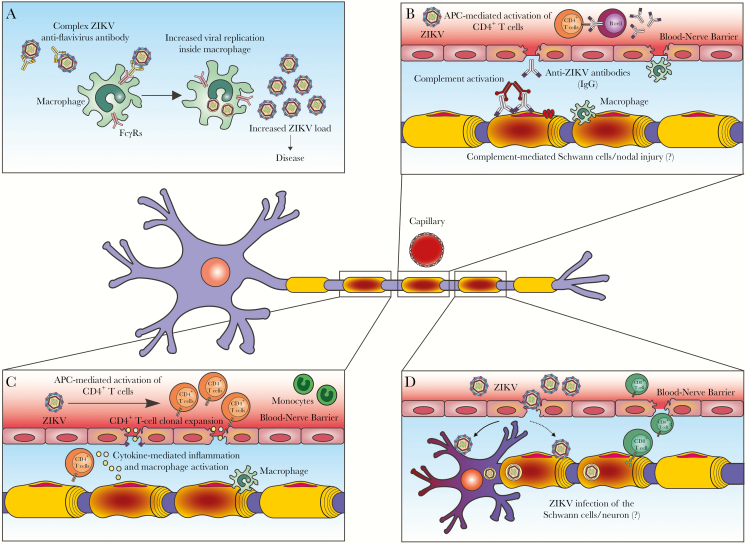Figure 2.
Speculated mechanisms for Zika virus (ZIKV)–associated neurological disease. A, Antibody-dependent enhancement (ADE) of infection. Anti-envelope (E) or anti-premembrane (prM) immunoglobulin G (IgG) antibodies elicited by previous flavivirus infection fail to neutralize ZIKV but instead enhance the capture of these complexes by cells expressing FcγR (eg, macrophages), which ultimately increases the ZIKV load, promoting disease. B, Anti-ZIKV IgG antibodies attach to antigens in the peripheral nerves (ie, cross-reactivity), which activates the complement system and triggers local inflammation driven by macrophages. C, Antigen-presenting cells (APCs) present ZIKV-derived peptides on class II major histocompatibility complex (MHC) molecules to naive CD4+ T lymphocytes, driving activation of these cells and inflammation. Cytokines and inflammatory cells are attracted to the peripheral nervous system, mediating peripheral nerve injury. D, ZIKV infects Schwann cells/neurons and causes cytopathic effects; viral infection activates CD8+ T lymphocytes, causing cytotoxicity and peripheral nerve injury.

